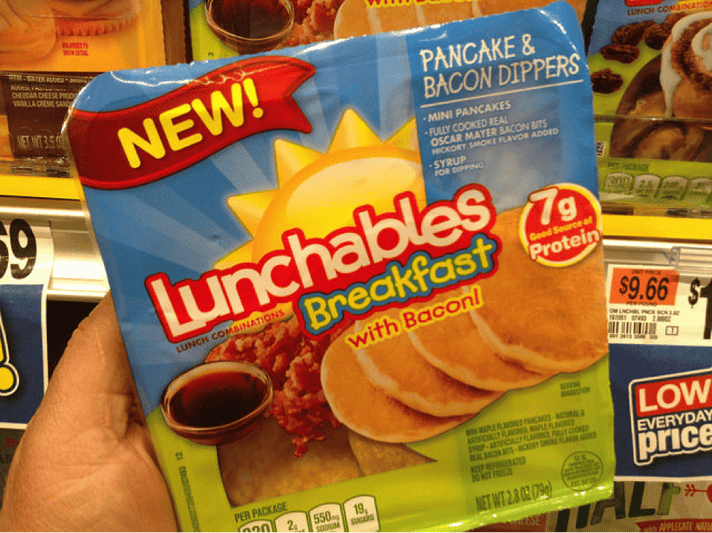
image credit: mike mozart/flickr cc
Ultimately, your brand differentiates you from your competitors.
Apple isn’t Dell, because many consumers perceive their products as “cleaner”. Mercedes isn’t Toyota, because it’s more luxurious. The difference between your brand and others is often in the details, which can have a significant impact on how your organization is perceived and received by your customers.
In the CPG realm, the role of packaging in branding cannot be underestimated. Time and time again, research indicates that packaging plays a significant role in consumer happiness with well-established brands. For organizations that are launching new products, packaging can be integral to a product’s reception and ultimate success.
If you are considering introducing a new product or conducting significant rebranding efforts, the appearance of your packaging is crucial. Your packaging must reflect your brand’s value to consumers, market position, and the contents. Holistic packaging is an important component of the “what you see is what you get” effect, where consumers are immediately able to identify how a product compares to others in a crowded retail setting. To help inspire you toward holistic packaging design, we’ve compiled several examples of brand identity that’s powerfully reflected in brilliant packaging.
-
Microwave Popcorn
General Mills issued the first patent for microwave popcorn bags in 1981. As a result of their innovation, American consumption of popcorn increased by “tens of thousands of pounds” in the year following the introduction of microwavable bags.
Microwave popcorn represented a significant innovation over prior methods of popcorn preparation. Americans were no longer forced to dirty a bowl to season or consume popcorn as a snack. For a snack that’s inherently convenient and self-contained, microwave-friendly bags represented a major innovation. While General Mills doesn’t continue to “own” the concept of microwave popcorn, there’s certainly brilliance in their innovation.
-
Steamables
Health-conscious consumers are on the rise, particularly among millennials. For many “healthy not wealthy” consumers, vegetable-based products represent an opportunity to leave a lower carbon footprint with on-the-go food choices, while maintaining a healthy diet.
Con-Agra foods was among the first to launch steamable vegetable bags, or single-serve containers of vegetables that could be steam-prepared in a work microwave without a need for numerous containers or complex equipment. This innovation in packaging design has paid dividends for health-conscious food brands identity, while providing immense convenience for consumers.
-
Tide Pods
For skeptical and often thrifty modern consumers, Tide Pods, single-use containers of laundry detergent, represent innovation in brand honesty. Launched as a result of Procter and Gamble’s open approach to product innovation, Adage notes that Tide Pods immediately began “stealing” customers following their launch.
There’s a bit of a conundrum when it comes to Tide Pods. Many consumers are wary enough of manufacturers to understand that excess detergent usage is common, even with detergent caps that specify usage guidelines. However, per Adage, consumers are “paying more” for the privilege to avoid waste. While Tide Pods are often costlier than alternatives, consumers perceive this packaging innovation as manufacturer honesty, which has lead to positive reception.
-
Chobani Flip-Top’s
For frequent consumers of health-conscious yogurt products, Chobani’s recent delivery of “flip” packaging is a useful innovation. Instead of presenting granola, chocolate nibs, and other toppings within the yogurt container, consumers are able to “flip” the separated packaging and mix their yogurt immediately before consumption.
Per Food Navigator, the result of Chobani’s packaging launch was a doubling in purchase of packaged yogurt products in the weeks following the product’s introduction. For many regular consumers of Chobani, the flip lids represented a massive gain in convenience for packed lunches.
-
Lunchables
While Lunchables may be considered an egregious environmental offender by packaging purists, few Mothers would question the convenience of their segmented containers. By delivering pre-sectioned, plastic trays of snack or lunch items for children, Mothers were able to gain significant amounts of time in the daily task of packing food for their children or household adults.
When coupled with Kraft’s recent efforts to make more environmentally-friendly packaging and a brand commitment to working towards a more “sustainable future,” Lunchables packaging is brilliant. It’s convenient, fast, easy, and perfectly tailored towards the needs of the brand’s target customers.
For brands who understand their customer’s needs, achieving holistic packaging design is attainable. Whether your consumers hope to minimize waste or gain minutes when packing their daily lunches, designing CPG packaging that moves your customers closer to their goals is almost always a win. Brands that take a page from the book of Tide Pods, Lunchables, and Chobani are almost certain to appreciate remarkable wins in the years to come.





